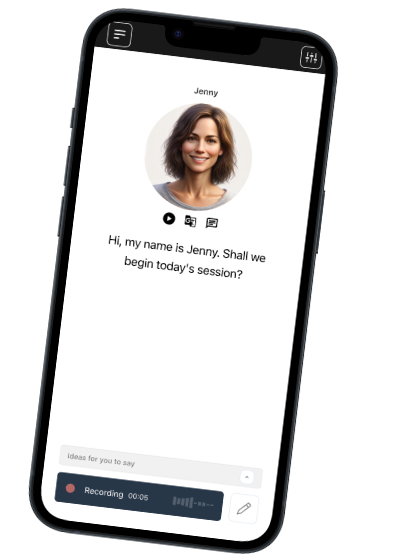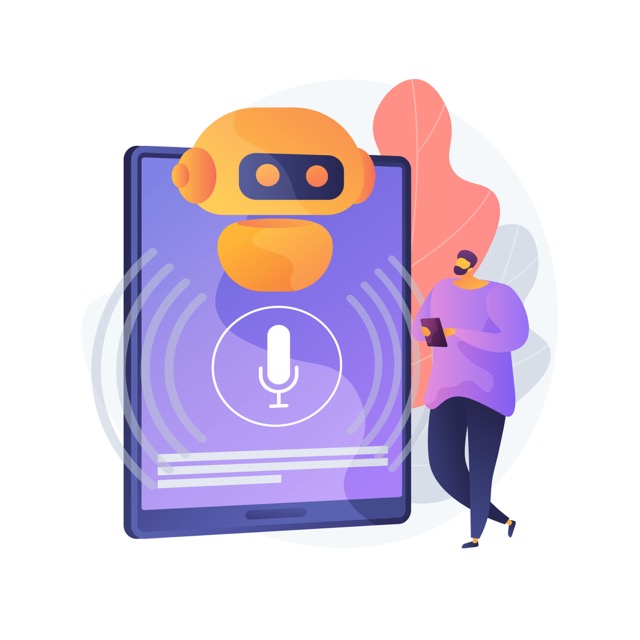Founded in Denmark. We respect your privacy.
Join a worldwide community of language learners
How AI-Powered Conversations Are Changing the Way We Speak New Languages
Last updated on
Why Learning Alone Isn’t the Same as Speaking Freely?
For many language learners, there’s a moment when everything goes quiet. You’ve memorized words. You’ve practiced phrases. But when it’s time to speak to someone, it’s like your brain freezes.
That moment of hesitation? It’s not a lack of knowledge. It’s a lack of interaction.Most apps focus on recognition and repetition matching text to audio, filling in blanks, repeating short phrases.
These methods are useful for building a foundation. But language isn’t static. It lives, breathes, and responds. And that’s the part learners often miss: the messy, unpredictable, and beautifully human flow of conversation.
When You Know the Words But Can’t Use Them
There’s a difference between knowing a word and owning it. You might recognize a phrase when you read it, but using it in the moment? That’s another skill entirely.
This is where many learners get stuck in what researchers call the interactional barrier. You may know how to answer a question, but not how to ask one, change topics, or recover from a mistake mid-sentence.
True fluency isn’t just vocabulary depth, it’s conversational agility. And that only comes from practice that pushes you beyond the script.
Why Conversations, Not Corrections, Drive Progress
Learning to speak another language should feel more like chatting with a curious friend than performing for a grammar quiz. A conversation offers more than correction, it gives you context, emotion, feedback, and most importantly, confidence.
That’s where new AI-powered Tutors stand out. Instead of waiting for you to finish and grading your answer, they listen, respond, and adapt as the exchange unfolds. It’s a two-way interaction something traditional methods can’t replicate.
How Smart Feedback Builds Real Fluency
Modern language platforms are starting to use voice AI that sounds and feels like a real person not just reading lines, but responding based on how you speak. These systems aren’t just good at catching pronunciation slips or grammar issues; they actually help you fix them as you’re speaking.
Here’s what that looks like in action:
- Pronunciation Checkpoints: Misplaced stress, unclear consonants, dropped endings, corrected gently and immediately.
- Pacing Practice: AI detects rushed phrases or awkward pauses and helps you find a natural rhythm.
- Grammar-in-Context: It nudges you when verb tenses or article use go off, but without interrupting the flow.
And because it remembers where you’ve struggled in the past, the feedback becomes more refined over time just like a tutor who knows you well.
Speaking With (Not at) Your App
What sets some of the new platforms apart is that they don’t just give you lines, they talk with you. You say something. They respond, naturally. Then it’s your turn again. That simple shift makes a massive difference.
In conversation, you’re forced to think. To listen closely. To react. That’s where the learning happens not in memorizing answers but in building your ability to communicate on the fly.
Some platforms even allow you to code-switch (ask in English, reply in Spanish), just like bilingual speakers do in real life. That flexibility helps train your brain to adapt faster.
From Reading to Reacting: Training Your Ears, Not Just Your Eyes
Many learners rely too heavily on visual input. Reading exercises, subtitles, vocabulary flashcards. But when it’s time to follow a native speaker’s voice? Everything blurs together.
To bridge that gap, you need to hear how real people speak: contractions, filler words, pauses, emotion, slang. And you need to hear it often.
- Listen to dialogues in natural settings, not just classroom phrases.
- Replay tricky audio clips and repeat them out loud.
- Shadow speakers: mimic their tone, rhythm, and energy.
Better yet, find a tool that lets you respond to those voices, not just hear them.
Why the Best Practice Feels Like a Chat, Not a Test
Great language tools don’t just teach, they create space for you to explore, mess up, and grow. The best ones sound like a conversation with a person: They pause, inflect, and adjust their tone. They let you feel the rhythm of the language, not just memorize it.
You get to hear how a curious tone sounds in French, or how frustration shows up in a Spanish phrase. These subtleties matter and they’re the secret to sounding natural.
When you practice with a voice that feels real, your own speech starts to sound more confident, more fluent and more you.
Takeaway
If your language routine feels like a solo mission, it might be time to level up your practice. Real progress comes from interaction where you’re not just repeating words but responding, reacting, and refining.
AI Tutors offer a powerful shift in how we learn: from passive recall to active conversation. Whether you’re preparing for travel, work, or just a deeper connection, don’t settle for silence.
Talk back. That’s how you’ll move forward.
Talk Your Way
to Fluency

Talkio is the ultimate language training app that uses AI technology to help you improve your oral language skills!
Try Talkio


